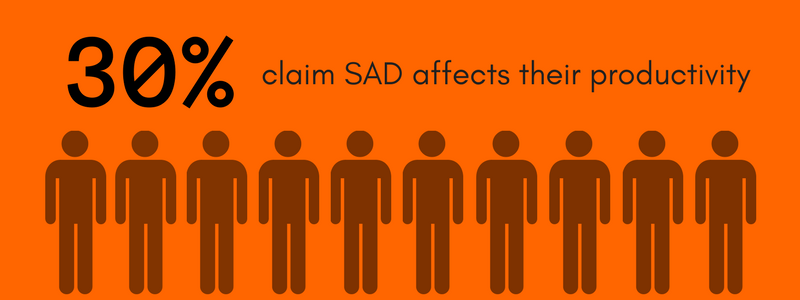Seasonal Affective Disorder, often summarised as SAD is a depressive illness caused by shortened daylight hours and a lack of sunlight.
Dark and gloomy during the commute into work. Dark and gloomy for the closing hours and commute home. The winter months are a testing time in the workplace. Employee mental health, wellbeing and productivity all suffer.
A recent survey by Peldon Rose has revealed that as many as 51% of people believe the darker days have an adverse affect on their mood.
To disregard SAD as something unworthy of cause for concern would be to disregard an issue that affects as many as a third of a workforce. 35% identify as suffering or having suffered from SAD.
It’s not all doom and gloom
Amidst the downbeat statistics is a glimmer of hope for employers looking to keep their staff happy over the winter months and beyond. Some important factors to take into account are:
- Supportive line management
- Exposure to Natural light
- Open culture
- Quiet and private workspaces
- Social and collaborative workspaces
Exploring these, and further creative ways to increase employee well being, will be greatly welcomed. As little as 26% of people say their office environment has a positive effect on mental health, and only 37% of employees feel their company appreciates them – down from 44% a year ago.
The reshuffle
The solution to employee’s winter blues could be as simple as an office re-shuffle. (Granted, office an reshuffle could realistically be a mammoth task).
Of the top 5 factors people stated would keep them happy over winter months and beyond, 4 were related to the layout or design of an office.
What would such a reshuffle look like?
First and foremost, arrange your workstations so that more of them are closer to natural light sources. Don’t take up places in direct line of sight of a window with empty space or storage. Maximise every ray of sunlight – after all, storage closets and water coolers don’t tend to suffer SAD quite as much as us humans.
Designate quiet areas, and conversely… communal areas. Having space to either relax with your own thoughts, or natter away with colleagues provides endless benefits where mental health and wellbeing are concerned.
Fifth on the list of 5 factors was inclusivity. Whilst this will likely be interpreted as something that should be addressed on human level, colleague to colleague, it can also be tackle as part of a reshuffle.
Inclusivity within seating arrangements and placement naturally breeds inclusivity on a peer-to-peer level. After all, the reason you don’t talk to John Smith on accounts is likely more down to where they sit, than personality.
Back

